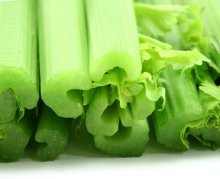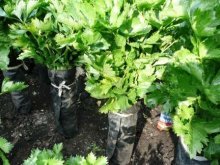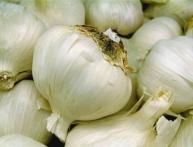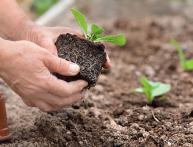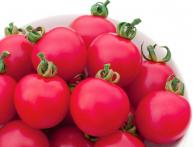Petiole celery: cultivation, care and features of garden crops

Today, the stem and leaves of petiole celery are widely used in cosmetology, pharmacology and cooking. Grow You can grow a plant on your own plot; it is enough to know about some of the features of caring for garden crops.
Content:
- What is petiole celery?
- Features of cultivation
- Everyone should know this: features of caring for garden crops
What is petiole celery?
Surely, each of the readers has seen celery root at the market or in the supermarket. There are about 20 varieties of this plant, but one is very popular - petiole celery. It is very often used for preparing first courses, and the fairer sex is sure that thanks to the juicy stem it is possible to lose extra pounds.
Celery belongs to the Apiaceae family. This is a perennial plant. In the first year, the gardener can enjoy the green leaves of the plant. In the second year, the garden crop forms a fruit with seeds (the flowering stage occurs beforehand).
This species of the Umbrella family is grown using seeds. However, if you want to get a good harvest, we recommend planting celery seedlings. Seedlings that are grown from seeds aged 3-4 years are especially valued.
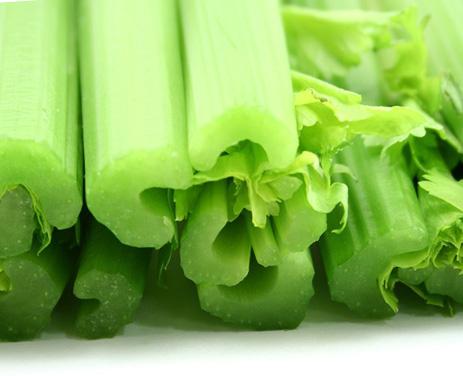
Features of celery:
- Family – Umbrella
- Leaves – pinnately dissected
- Root – taproot
- Reproduction – vegetative
- Harvest - per year landings
This amazing cultivated plant, with proper care, will give a truly generous harvest. Experts say that petiole celery is easy to care for, so a beginner in gardening can start planting seeds or seedlings.
Features of cultivation
If you like to season your dishes with various “green” seasonings, then you should definitely pay attention to petiole celery. But in order to grow this exquisite plant, you need to get acquainted with some techniques for growing garden crops.
The place for planting celery should allow the sun's rays to pass through well, but under no circumstances should it “burn” them. The most suitable temperature for the normal growth and development of an umbrella culture is considered to be +20 degrees.
Petiole celery perfectly withstands our climatic conditions, and even the first frosts do not always frighten the plant. For planting celery, loose soil that has neutral acidity is suitable. In the case when soil acidity is very high - we recommend adding ordinary lime. For some time, the product will help relieve the alkaline process.
Tip for beginning gardeners: do not plant celery seeds next to onions, parsnips and garlic. The plant may suffer due to a large pest - the celery fly. Whenever possible, spray the young plant with an ash solution.
Seedling growing method:
- Soak the plant seeds in warm water. Place the container of water in a warm, dark place.
- Prepare a container with soil for planting seeds. Plant celery seeds in a small pot.Place the tray in a warm, well-lit place (it is best to plant seeds in March).
- Keep the soil moist at all times. Seedlings need to be watered every 3-4 days. Do not flood the plant - you risk not seeing the first shoots at all.
- When the first leaves appear, plant the seedlings in separate containers (cups). Continue caring for your celery seedlings.
When true leaves appear, plant the plant in an open area. The best period for planting is considered to be the end of April - the beginning of May. By this time, you should already have time to apply fertilizer and thoroughly fluff the soil. Dig shallow holes (the plant does not like deep planting) for seedlings, and place the young plants in the holes (the diameter and depth of the hole should literally be 2-3 times the size of the seedlings).
Stomp down celery, and water the plant thoroughly with water. The seedling method of growing will allow you to enjoy a good harvest already in the middle of summer. There is no need to ignore all the stages of proper seedling cultivation, otherwise the plant will fail to sprout at all. What measures should be taken to ensure that petiole celery takes root well in domestic soil?
Everyone should know this: features of caring for garden crops
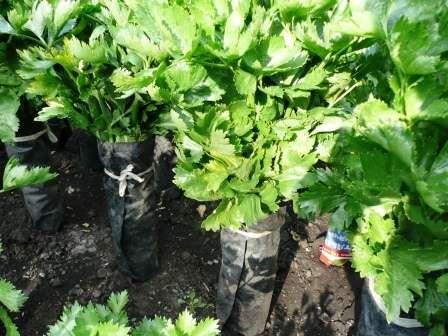
As it turns out, growing petiole celery from seedlings is very simple. But along with the standard rules, there are also some nuances of caring for cultivated garden plants:
- Regular moistening of the soil. Celery loves moisture; you need to water the plant no later than 3-4 days. Before watering, be sure to check the soil; it should not be wet.
- Fertilizer. It is recommended to fertilize using liquid organic products every 14 days.
- The plant needs to be hilled up every 4 weeks or as fast as the celery bushes grow.
- Do not forget to weed the bed and remove weeds.
Weeds not only do not add color to the garden plot, but can also lead to more serious problems, for example, improper development of the root system. By the way, if you don’t particularly like physical labor, before planting seedlings, treat the area with a special substance that will prevent the spread of weeds.
Petiole celery is an amazing and very useful plant. The leaves of the cultivated garden plant are widely used in cooking and alternative medicine. The stem of petiole celery is particularly juicy; it will be an excellent ingredient for making fresh juices and smoothies. Take into account all the nuances of planting seeds and planting seedlings, and petiole celery will give you a generous and incredibly healthy harvest!
Video about growing celery in the garden:

